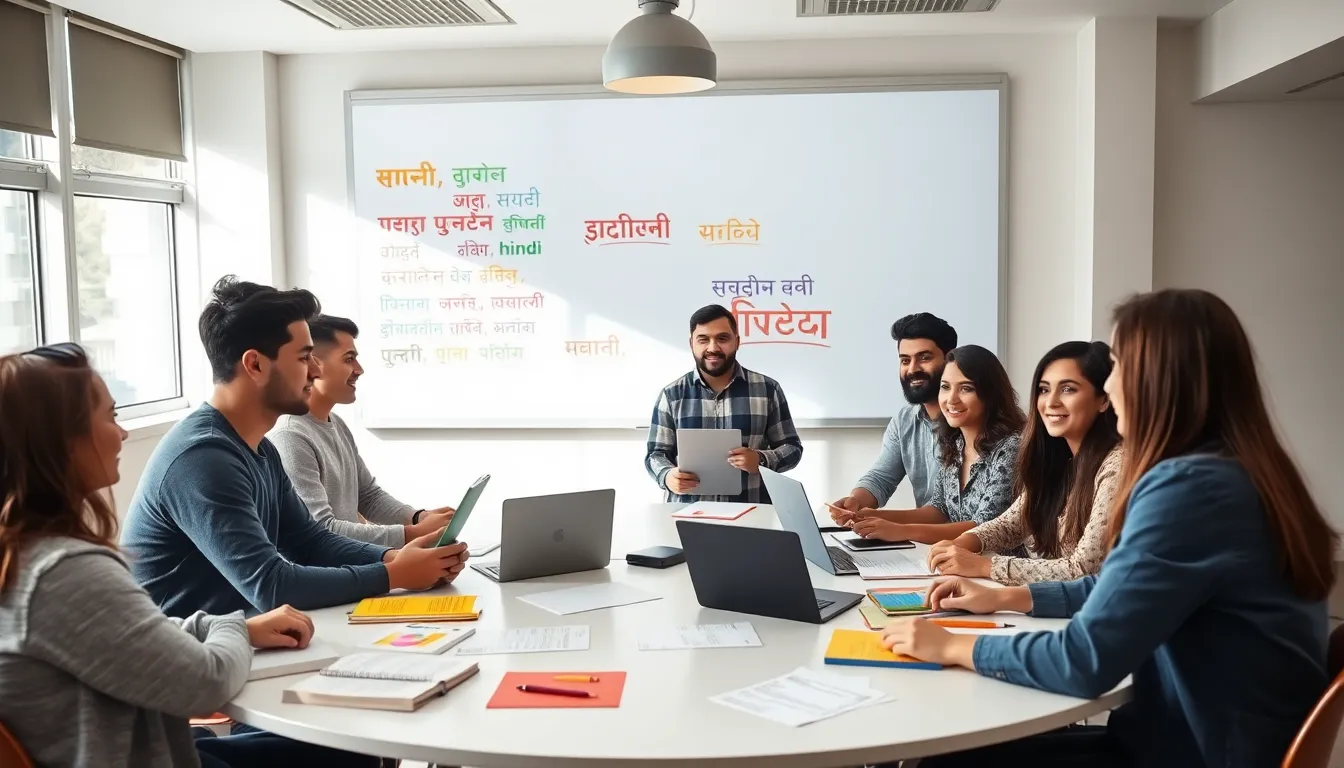Ever wondered why Hindi is the fourth most spoken language in the world? It’s not just a language: it’s a vibrant tapestry of culture, history, and connections. Learning Hindi can open doors to incredible opportunities, whether you’re planning a trip to India, aiming to connect with native speakers, or diving into Bollywood movies. So, buckle up and get ready: this guide will make learning Hindi as enjoyable as a delicious plate of butter chicken.
Table of Contents
ToggleImportance Of Learning Hindi

Cultural Significance
Hindi isn’t merely a means to communicate: it’s a gateway into a rich culture. With its origins steeped in ancient history, understanding Hindi helps appreciate Bollywood films, classical music, and festivals that witness joy and color. For instance, if someone travels to India during Diwali, knowing a few Hindi phrases can turn a simple encounter into an unforgettable memory.
Global Presence of Hindi
Did you know that Hindi is spoken by over 600 million people around the globe? It’s not only prevalent in India, but also in countries like Nepal, Mauritius, and Fiji. In fact, Bollywood films have made Hindi popular worldwide, and millions are learning it just to enjoy the songs and stories first-hand. This global presence makes it not only a cultural asset but also a valuable skill in an increasingly interconnected world.
Basics Of Hindi Language
Alphabet and Script
Hindi uses the Devanagari script, which looks complex at first glance, but it’s quite logical once understood. The script has 13 vowels and 33 consonants. Each letter corresponds to a specific sound, and it’s phonetic, meaning words are pronounced exactly as they are written. This makes learning the alphabet an adventure rather than a chore.
Common Phrases and Vocabulary
Starting with a few simple phrases can be extremely beneficial. Here are some essentials:
- Namaste (Hello)
- Shukriya (Thank you)
- Aap kaise hain? (How are you?)
These phrases not only help in casual conversations but also make a good impression on native speakers.
Grammar and Sentence Structure
Tenses and Verb Conjugation
Hindi grammar can appear daunting at first, especially with its three tenses: past, present, and future. Each tense has specific endings depending on who is speaking. For example, the verb ‘to eat’ changes based on the subject: main khata hoon (I eat), tum khate ho (you eat). Once someone grasps this concept, the rest of the grammar starts falling into place.
Nouns, Pronouns, and Adjectives
Nouns in Hindi are gendered, meaning they can be masculine or feminine. This gendering affects adjectives and pronouns as well, so forget about the awkwardness of gender-neutral language. For instance, acchha means good, but becomes acchhi when describing a feminine noun. Understanding these differences can make one’s Hindi sound more natural.
Resources For Learning Hindi
Online Courses and Apps
In the digital age, various platforms offer quality resources. Applications like Duolingo and Rosetta Stone provide interactive ways to learn vocabulary and grammar at one’s own pace. These platforms make the learning experience engaging through gamification, quizzes, and community support.
Books and Audio Resources
Books like Complete Hindi: A Teach Yourself Guide and Hindi for Dummies are fantastic for anyone who prefers traditional learning methods. Audiobooks and podcasts are also immensely helpful. Listening to native speakers helps attune one’s ear to the language’s sounds and rhythms, making it easier to replicate.
Practice Tips and Techniques
Speaking Practice Opportunities
One of the best ways to grasp a language is through conversation. Finding a language partner or enrolling in a local class can dramatically enhance fluency. Websites like Tandem allow individuals to connect with native speakers around the globe, providing exposure to conversational Hindi that textbooks simply can’t offer.
Immersion and Cultural Experiences
Consider immersing oneself in the language by watching Hindi movies or listening to Hindi music. Engaging with cultural content can foster a better understanding of nuances and slang. Attending local cultural events or festivals can also provide practical language experiences, making learning dynamic and exciting.


